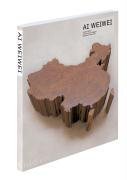Search -
Ai Weiwei (Contemporary Artists (Phaidon))
Ai Weiwei - Contemporary Artists Phaidon
Author:
Ai Weiwei (b. 1957) is truly an artist for the twenty-first century. In his sculptures, he refashions artefacts and antiques into surprising, sometimes monumental constructions such as "Template" (2007): hundreds of wooden doors and windows taken from demolished Ming and Qing dynasty temples and arranged into a massive outdoor sculpture.As much ... more »
Author:
Ai Weiwei (b. 1957) is truly an artist for the twenty-first century. In his sculptures, he refashions artefacts and antiques into surprising, sometimes monumental constructions such as "Template" (2007): hundreds of wooden doors and windows taken from demolished Ming and Qing dynasty temples and arranged into a massive outdoor sculpture.As much ... more »
ISBN-13: 9780714848891
ISBN-10: 0714848891
Publication Date: 5/16/2009
Pages: 160
Rating: ?
ISBN-10: 0714848891
Publication Date: 5/16/2009
Pages: 160
Rating: ?
0 stars, based on 0 rating
Genres:
- Arts & Photography >> History & Criticism >> General
- Arts & Photography >> History & Criticism >> Schools, Periods & Styles >> Pop
- Engineering & Transportation >> Architecture >> General
- Engineering & Transportation >> Architecture >> Individual Architects & Firms >> General
- Reference >> Architecture




